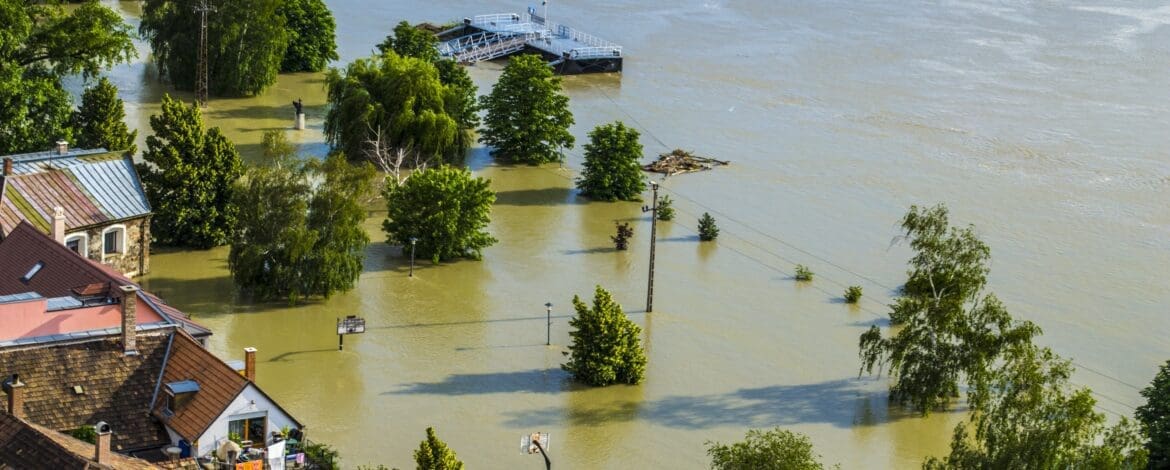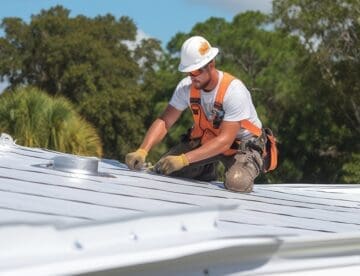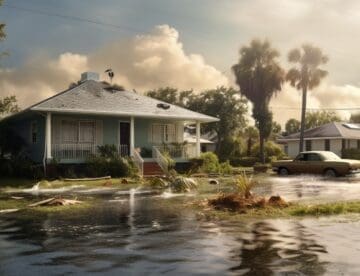Flooding after storm damage is a dreadful experience. You may return to your property to see extensive damage to the roof, windows, and structure. In many cases, hundreds of gallons of water from storm surges or burst water mains can flood your property, destroying everything in its path.
Floods from storm damage can leave their mark long after the storm has passed. Excessive moisture and humidity can cause mold and mildew, which can be costly to restore and cause serious health issues.
However, it’s not just the physical damage to your home that is soul-destroying. You may have lost irreplaceable personal items in the storm damage — things that money can never buy.
But as you get the first glimpse of your home after storm damage, you may wonder where to start. This article has seven essential steps to take after storm floods have damaged your home.
Seven Steps to Take After Your Storm Damage Floods Your Home
There are two main things to do after your home is damaged due to a hurricane or tropical storm. The first is to ensure personal safety for you and your family. The second is to start the clean-up process and restore as much of the damage as possible.
1. Follow emergency service’s advice on returning home
After the storm has passed, you may want to return home as soon as possible to clean up any remaining water and assess the damage. You should only go back home once the authorities tell you it’s safe. Even if it is safe to return, you should still take precautions.
For example, there could be unseen dangers in the home. The CDC says that you should stay out of floodwater. This can contain human and animal waste, hazardous chemicals, dead animals, and live electrical currents.
2. Shut off gas and electricity
One of the first steps is shutting off utilities immediately after you return to the property. To do this, you must avoid doing this if standing water is in your home. Dealing with electricity while standing in water can have lethal consequences. If in doubt, it’s best to call an electrician to check the wiring and ensure the power is off.
3. Access and document the damage
Once safe, the next step is to inspect the house. Of course, viewing the damage can be highly emotional. However, it would be best if you got an idea of the extent of the devastation before contacting your insurance company. Documenting the damage by taking photos and videos is also a good idea.
It’s helpful to take note of the following:
- Roof damage, including missing or broken shingle, holes, and leaks
- Broken doors and windows
- Moisture damage
- Flooding
- Broken or damaged appliances and furniture
In many cases, it’s best to call a roofing company to do a complete roof inspection for storm damage. They can document the extent of the damage and contact the insurance company. Repairing the roof is a top priority because it protects the property from leaks and flooding if it rains.
4. Contact your insurance company
After taking pictures of the damage your home has sustained, contact your insurer to file a claim. They will send an adjuster to assess the extent of the flood damage to your roof, home, and possessions. But, first, it’s good to check the roof requirements for homeowners insurance.
5. Buy clean water and supplies
After you have taken steps to assess property damage, it is time to ensure you have adequate supplies. The priority should be access to clean water. This can often be scarce after a severe storm. However, to stay healthy, you must stay hydrated. So, stock up on bottled water until mains water is safe to drink.
6. Get rid of perishable items
It is typically necessary to get rid of any food in your home. Although you want to salvage as much as possible, food quickly becomes contaminated due to dirty water, high humidity, or not being refrigerated. Usually, canned foods are OK to keep, as long as they are not bulging or damaged.
7. Take steps to dry out water damage and reduce humidity
A common issue after storm damage is mold and mildew. Even weeks or months after the event, black, green, or brown moldy patches can appear on ceilings, walls, and floors. Therefore, it’s imperative to start the drying-out process as soon as possible. In most cases, it’s necessary to call a professional restoration company to control moisture and humidity levels.
It is vital to remember your personal safety. Therefore, always wear protective gear and wash any part of your body that contacted contaminated water during the clean-up. This way, you can protect yourself from contracting bugs, bacteria, and viruses.
How to Protect Your Roof From Storm Damage
Of course, you can’t predict a tropical storm’s weather or strength. But you don’t have to wait until a hurricane hits to start thinking about protecting your property. You can do plenty of things to stormproof your property as much as possible.
Here are some simple steps to help prepare your house for hurricane season in Florida.
Schedule a regular roof inspection
Maintaining the roof is a simple step to minimize the risk of your home flooding after a storm. Before hurricane season, you should visually inspect the roof to check for loose, missing, or broken shingles. However, a professional roof inspection will ensure that your roof is ready to withstand hurricane-force winds.
Related reading: Roof checklist for fall season.
Keep your gutters and downpipes clean
Blocked drainage systems and clogged gutters are the last things you need during a severe weather event. Therefore, clean out the gutters at least once a year. This will ensure water flows from the roof without finding its way into your home. Also, pooling water because of faulty drainage can cause water leaks and property damage.
Trim your trees
Hurricanes can quickly cause dead or diseased branches to snap off, damage your roof, or break windows. To avoid this, remove any potentially dangerous tree limbs and ensure branches are well away from the structure.
Install hurricane straps
In Florida, it’s a good idea to have a trusted local roofing company install roofing straps. Also called hurricane straps, they are designed to hold your roof securely to the wall. Besides giving you extra protection against damage to your roof, you may qualify for a discount on your home insurance.
Call us when your home floods from storm damage.
Code Engineered Systems is your local professional roofing contractor in Tampa Bay, FL. Our team of roofing professionals has many years of experience restoring commercial and residential roofs after storm damage. We can also assist with processing your insurance claims.
Call us today at 813-373 9088 or complete our online contact form. We can give you the best advice on protecting your home before hurricanes arrive or mitigating roof damage.




